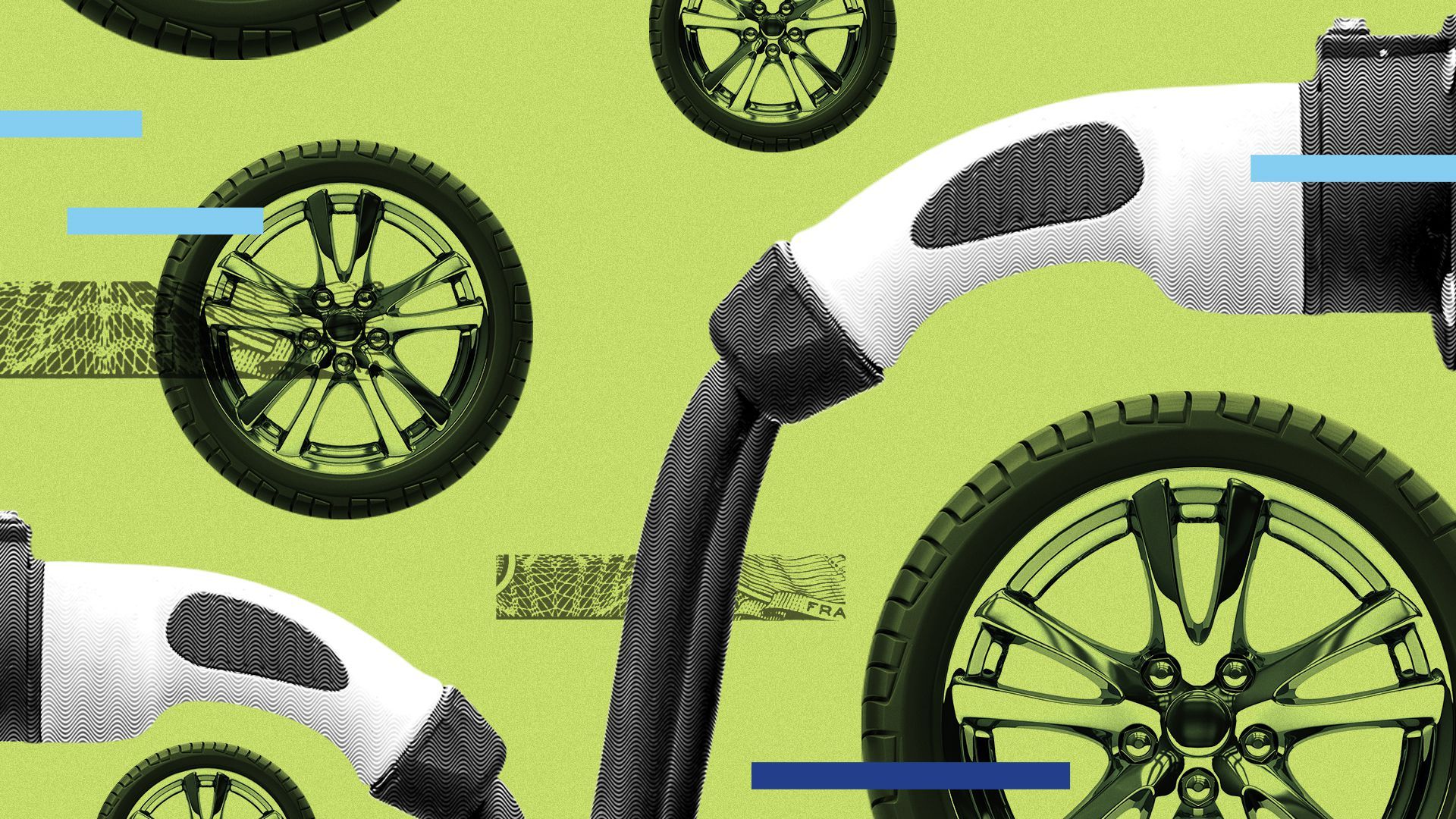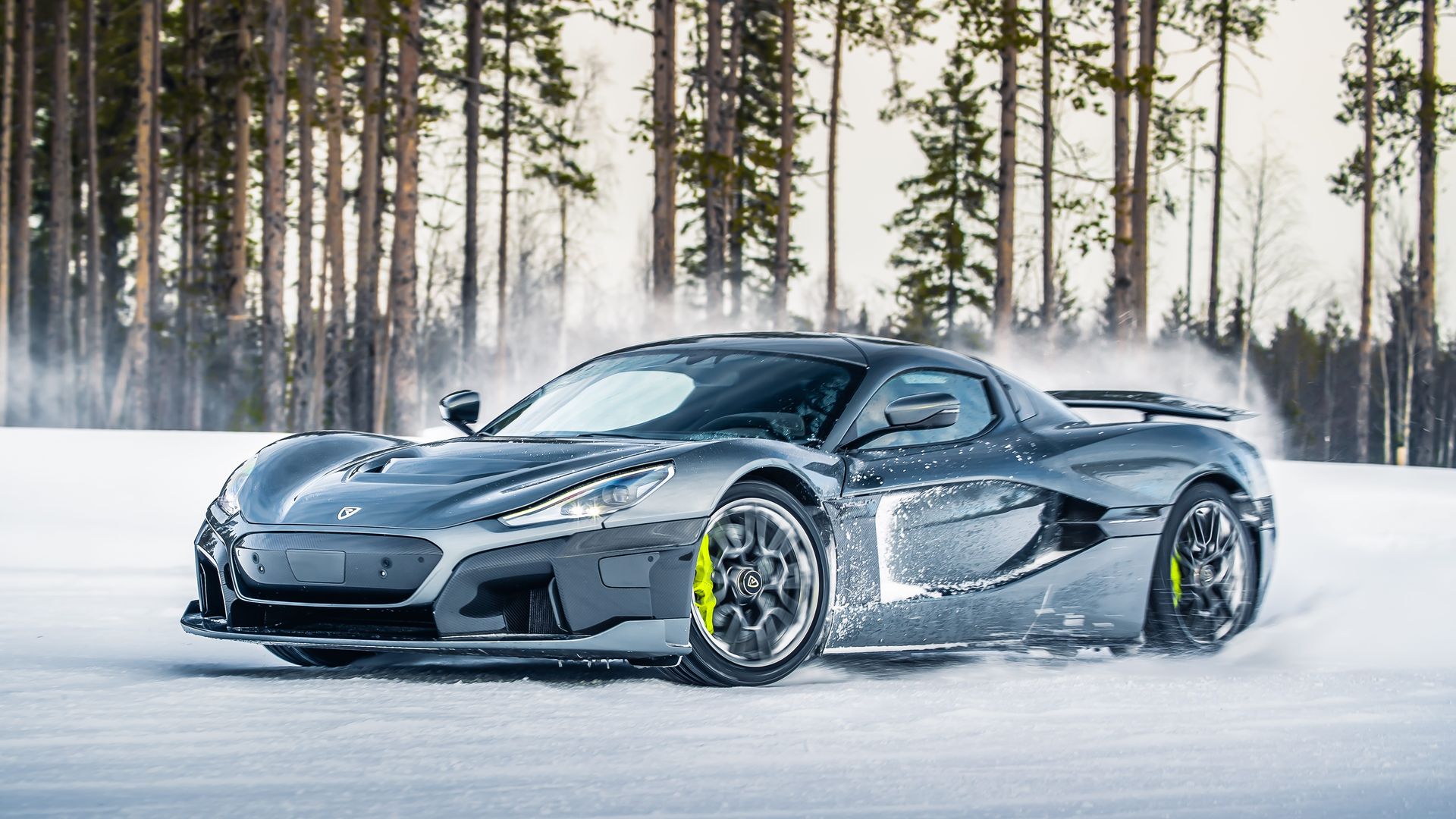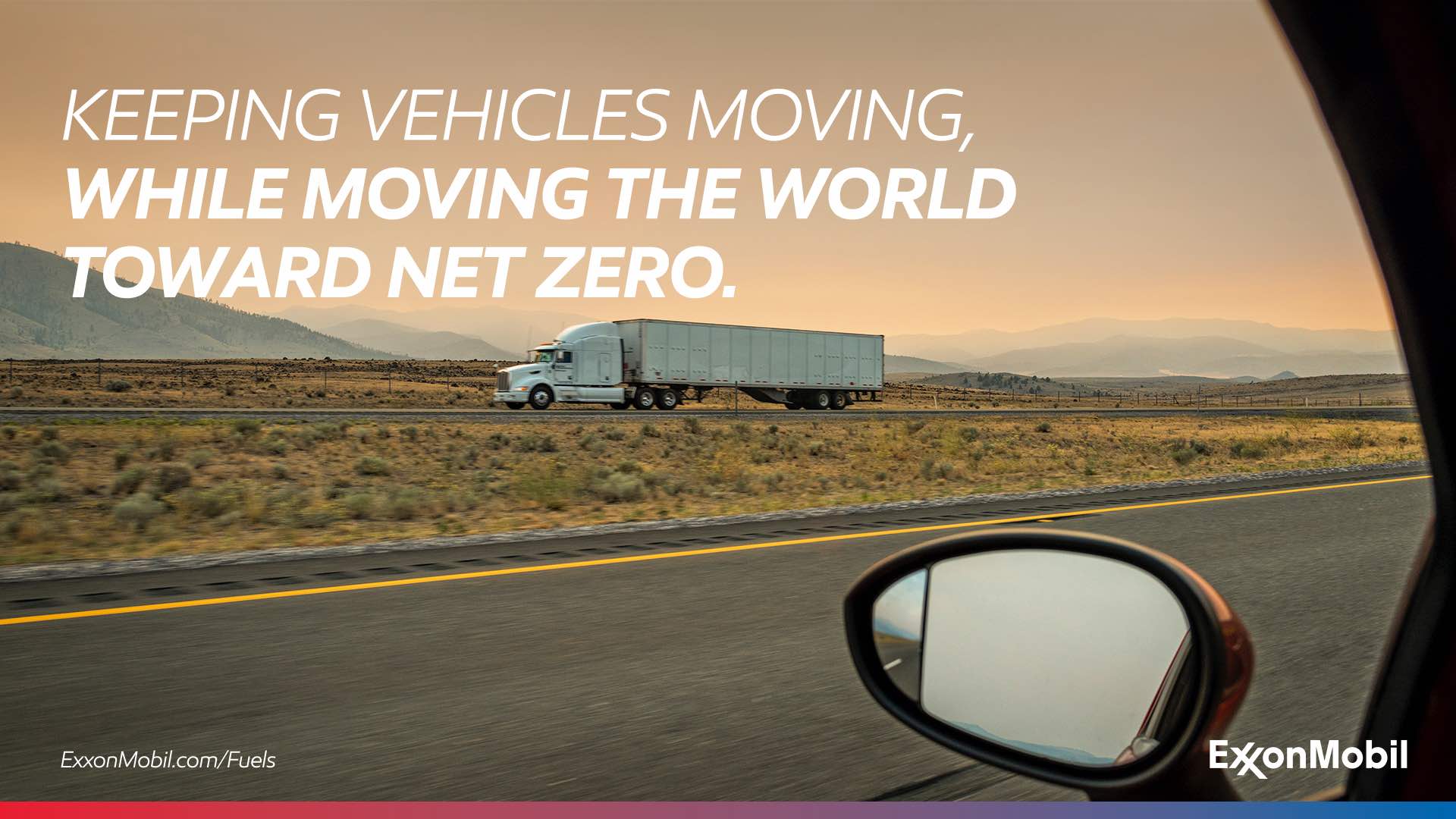| |
| |
| |
| Presented By ExxonMobil |
| |
| Axios Generate |
| By Ben Geman and Andrew Freedman · Jun 01, 2022 |
| 🐪 Yes! That day already. Today's Smart Brevity count is 1,040 words, 4 minutes. 📬 Did a friend send you this newsletter? Welcome, please sign up. 🎶 Yesterday marked the 1976 release date of Steely Dan's "The Royal Scam," which provides today's intro tune... |
| |
| |
| 1 big thing: The risk of diverging EV futures |
 Data: BloombergNEF; Chart: Erin Davis/Axios Visuals Electric vehicle growth is following an uneven path that may leave emerging economies behind, a new analysis warns, Ben writes. Why it matters: "There is a growing risk that the transition is not an equitable one, and that many economies miss out on the benefits of better air quality and new investment," the research firm BloombergNEF finds. The big picture: The post-2025 section of its just-released annual outlook explores global EV adoption under two broad scenarios. - The "economic transition scenario" is driven largely by "techno-economic trends and market forces" and assumes no new policies.
- That's what you see in the chart above — and the "adoption gap" is clear even as sales surge this decade in Europe, China and the U.S.
- The other broad scenario is a pathway to reaching net-zero emissions by 2050 in the road transportation sector.
Zoom in: Faster uptake in emerging economies is key (but not a silver bullet!) for getting transportation overall on that net-zero pathway. The report covers all vehicle categories but sticking with passenger cars, this stat drives the point home: - The global electric passenger fleet is roughly 470 million in 2035 in the "economic transition" case.
- It needs to be 612 million in the net-zero path, and "much of the gap will have to be met in emerging economies."
- This divide also exists to varying degrees in segments like buses and two- and three-wheeled vehicles.
What they're saying: The report calls for rich countries and multilateral institutions to weave EV investments, incentives and charging deployments into international climate finance plans. |
    |
| |
| |
| 2. The big picture on electric vehicles |
 |
|
| Illustration: Shoshana Gordon/Axios |
| |
| Here are some high-level takeaways from the new EV outlook by BloombergNEF, Ben writes. Sales are soaring. Global passenger EV sales are slated to reach roughly 21 million in 2025, up from 6.6 million last year. Van and truck sales are also growing. The commodity crunch isn't a crisis (for now). "Some of the factors that are driving high battery raw material costs — war, inflation, trade friction — are also pushing the price of gasoline and diesel to record highs, which is driving more consumer interest in EVs." Still, it delays some EV segments' achievement of sticker price parity with internal-combustion models. But adoption lags behind climate goals. The need for steep global emissions cuts means sales must grow even faster — even where they're already robust — to be consistent with the Paris Agreement goals for checking global warming. The big picture: The path to a net-zero in 2050 means zero-emission vehicles need to be 61% of new passenger vehicle sales by 2030 and 100% by 2038. "The window to stay on track for net zero is closing quickly," the report states, calling for a major push by governments and industry. Go deeper |
    |
| |
| |
| 3. Pondering new oil production incentives — really |
 Data: FactSet; Chart: Kavya Beheraj/Axios With oil prices soaring and U.S. companies slow-walking production increases, some analysts say politically noxious government incentives — like subsidies for oil companies — could be needed to bring supply back in line with demand, Axios' Matt Phillips reports. Why it matters: The Russian energy shock, amid broad inflation, leaves political leaders — at least those hoping to stay in power in democracies — with a series of ugly to nightmarish policy options. The big picture: Russia is the world's second-largest exporter of crude oil and the largest exporter of natural gas. Sanctions levied in response to its invasion of Ukraine upended energy markets, supercharged prices, and triggered a rush to secure supplies. - In theory: The U.S. — the world's largest crude oil producer — has the reserves, wealth and technical know-how to boost production, offsetting some of the Russia shock's impact on inflation.
- In practice: Unlike other energy superpowers — Saudi Arabia and Russia, for instance — the U.S. relies on a system of laws and market incentives to coax companies to pump more. U.S. leaders can't just pick up the phone and order a couple of million extra barrels of production per day.
Read the whole story. |
    |
| |
| |
| A message from ExxonMobil |
| Energy for today and solutions for tomorrow |
| |
 |
| |
| At ExxonMobil, we're working to supply the energy the world needs while also developing lower-emission fuels. Innovations like renewable diesel made from plants could reduce emissions from trucks by about three million metric tons per year compared to conventional fuels. |
| |
| |
| 4. Big in venture capital: $536M for Rimac |
 |
|
| Photo courtesy of the Rimac Group |
| |
| The Rimac Group, a Croatian electric sports car and EV tech company, raised $536 million in Series D funding led by SoftBank and Goldman Sachs, with existing backer Porsche taking part too, Ben writes. Why it matters: The funding values the company at over $2 billion and will help translate experience gained from developing the Nevera "hypercar" into becoming a component and tech provider to major automakers, Rimac said. What they're saying: "Rimac has quickly established itself as a leading EV technology partner to global OEMs supporting their transition to an electric future," SoftBank Investment Advisers' Jimi Macdonald said in a statement. Zoom in: While Rimac is focused on becoming a supplier, CNBC reports it will keep manufacturing the $2.4 million Nevera through its joint venture with Porsche. TechCrunch has more. |
    |
| |
| |
| 5. 🏃🏽♀️Catch up fast on policy: solar, water, HHS |
 |
|
| Illustration: Rae Cook/Axios |
| |
| The Interior Department is cutting rents and fees for wind and solar projects on public lands, Ben writes. Why it matters: The move follows "years of lobbying from clean power developers who argued that lease rates and fees...were too high to draw investment," Reuters reports. And two more policy items on my screen... 🚰 Today the White House is launching an "Action Plan on Global Water Security," citing increasing threats worldwide that range from poor management to accelerating climate change. - The intrigue: The plan VP Kamala Harris is announcing "elevates water security as a foreign policy priority" for the first time, per a White House official.
🏥 The Department of Health and Human Services is standing up an Office of Environmental Justice. It sits within HHS' climate and health equity office launched last year. Axios' Shawna Chen has more. |
    |
| |
| |
| 6. One tech thing: Stratospheric robots |
 |
|
| Neighborhood surrounding a lake. Photo: Near Space Labs |
| |
| Near Space Labs has launched its newest fleet of robots designed to dangle from weather balloons in the stratosphere and snap high-resolution images of Earth's surface, Axios' Miriam Kramer and Andrew report. Why it matters: These detailed photos can be used to aid in disaster relief, monitor roadways, keep an eye on industrial operations, and watch over wildfires, deforestation and other environmental crises. Zoom in: The newly updated imaging robots — called Swifty 3 — are able to take photos at 7- to 10-centimeter resolution, higher than many commercial satellites. "With high resolution, you're able to map debris on the ground easily and help with recovery," Near Space Labs CEO Rema Matevosyan told Axios. Read the whole story. |
    |
| |
| |
| A message from ExxonMobil |
| We're working to ensure energy security and advance innovation |
| |
 |
| |
| At ExxonMobil, we're working to produce the energy the world needs today, while developing new, engine-ready fuels for tomorrow. Solutions like renewable diesel, advanced biofuels, and eFuel made with captured CO2 could help reduce emissions by up to 85% compared to conventional fuels. |
| |
| 🙏Thanks for reading! We'll see you back here tomorrow. |
 | It's called Smart Brevity®. Over 200 orgs use it — in a tool called Axios HQ — to drive productivity with clearer workplace communications. | | |










No comments:
Post a Comment